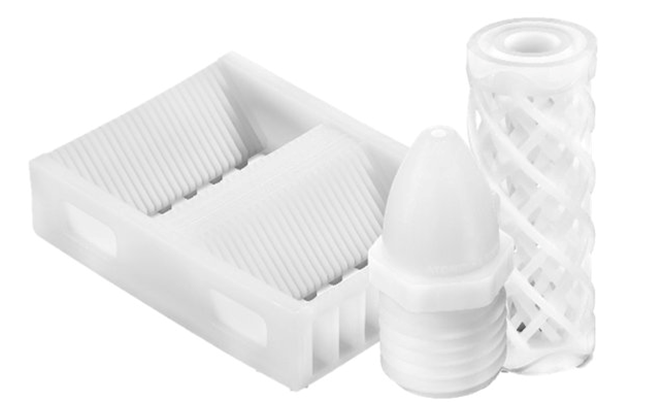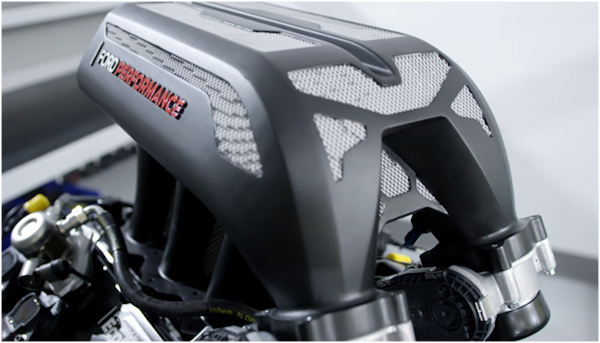
Charles R. Goulding and Preeti Sulibhavi consider further solutions 3D printing can offer to major supply chains in the face of ongoing disruption.
A recent Wall Street Journal article described major companies that were experiencing supply chain disruptions and bottlenecks including Ford, 3M, Harley-Davidson and Whirlpool. The 3D printing industry can analyze component and supply imbalances and provide 3D printing solutions. Some of the companies reported on by the WSJ are discussed below.
Ford
The overall vehicle sales market is strong right now. Interest rates are low and mass transit users may be more inclined to purchase cars now that they are staying local. Travelers are actively avoiding airplane trips and taking regional drive-to vacations. However, vehicle sales are cyclical and Ford needs to optimize the peak of the cycle especially since they have invested in an exciting new truck model lineup.

The good news is that Ford already makes extensive use of 3D printing and can lean on its 3D printing supply chain for solutions.
Harley-Davidson
Harley-Davidson has a new CEO and is going through a business model change while also going back to its roots. The new CEO, Jochen Zeitz, has 3D printing experience and can use it to help manage the business during this transition period.
Harley has also recently spun off its embryonic e-bike entity, which we discussed in a recent article about Austin, Texas in line to become the nation’s e-bike capital. Additive manufacturing was utilized to design and produce parts for the LiveWire electric bike prototype.
3M
3M is a critical supplier of PPE, including N-95 masks and medical equipment product lines, and has significant 3D printing expertise. Additive manufacturing is an area in which 3M’s science-based approach has led to ground-breaking advancements, and can be leveraged further to mitigate supply chain bottlenecks.
Whirlpool
The residential home sale market is very strong and Whirlpool, the world’s largest appliance manufacturer, is a major beneficiary. For example, Whirlpool is introducing 3D printed appliance components with tech startup Spare Parts 3D. Spare Parts 3D is analyzing the company’s catalog and utilizing FDM, SLA and MJF technology to create these components. Whirlpool is bringing in new suppliers to address supply chain imbalances and 3D printing suppliers should take the opportunity to become a new vendor.

3D Printing and Crisis Management Centers
To deal with the severity of supply chain disruptions many companies have set up supply chain management centers. These centers should be made aware of both the company’s 3D printing expertise and the industry’s 3D printing expertise. 3D printing service providers should consider contacting these centers to offer solutions.
Federal tax incentives, such as the Research and Development Tax Credit, are available for companies that pursue 3D printing activities.
The Research & Development Tax Credit
Whether it’s used for creating and testing prototypes or for final production, 3D printing is a great indicator that R&D Credit eligible activities are taking place. Companies implementing this technology at any point should consider taking advantage of R&D Tax Credits.
Enacted in 1981, the now permanent Federal Research and Development (R&D) Tax Credit allows a credit that typically ranges from 4%-7% of eligible spending for new and improved products and processes. Qualified research must meet the following four criteria:
- Must be technological in nature
- Must be a component of the taxpayer’s business
- Must represent R&D in the experimental sense and generally includes all such costs related to the development or improvement of a product or process
- Must eliminate uncertainty through a process of experimentation that considers one or more alternatives
Eligible costs include US employee wages, cost of supplies consumed in the R&D process, cost of pre-production testing, US contract research expenses, and certain costs associated with developing a patent.
On December 18, 2015, President Obama signed the PATH Act, making the R&D Tax Credit permanent. Beginning in 2016, the R&D credit has been used to offset Alternative Minimum Tax (AMT) for companies with revenue below $50MM and, startup businesses can obtain up to $250,000 per year in payroll tax cash rebates.
Conclusion
During the first COVID-19 wave the 3D printing industry stepped up to provide solutions. However, the 3D printing industry needs to maintain the momentum and help remove some of the current supply chain bottlenecks.
